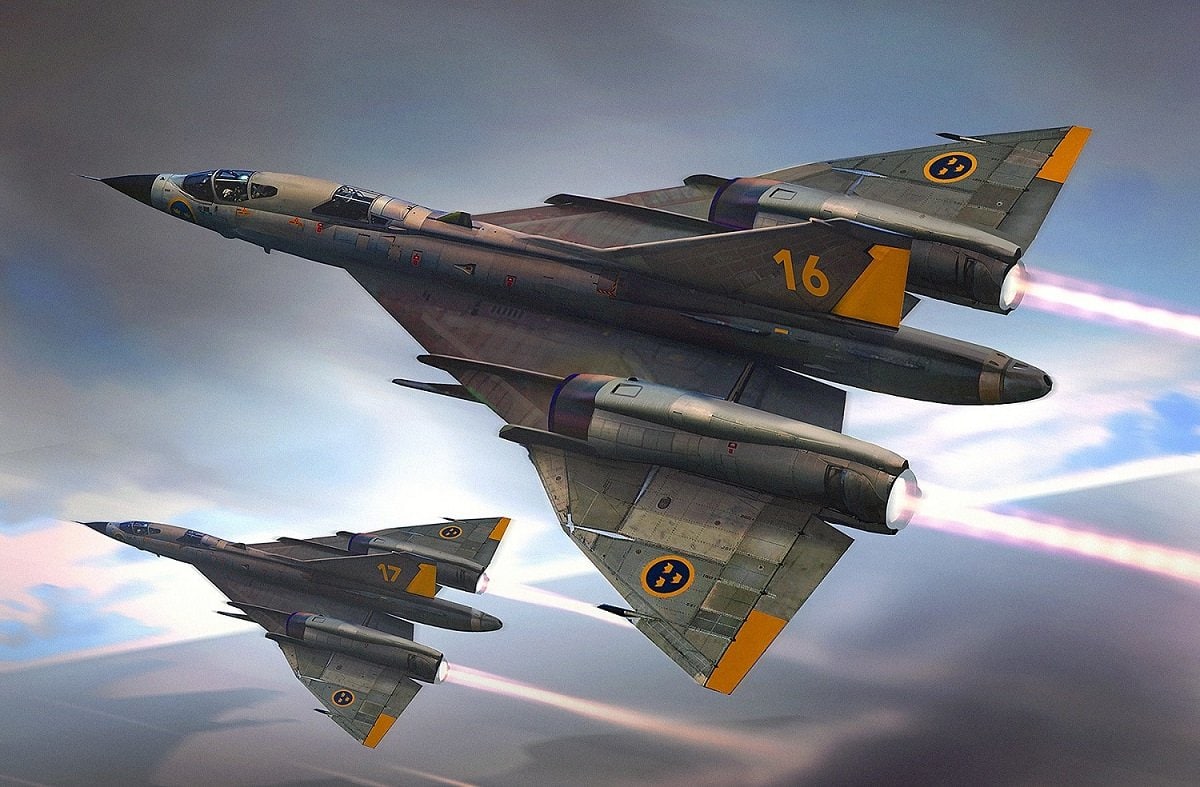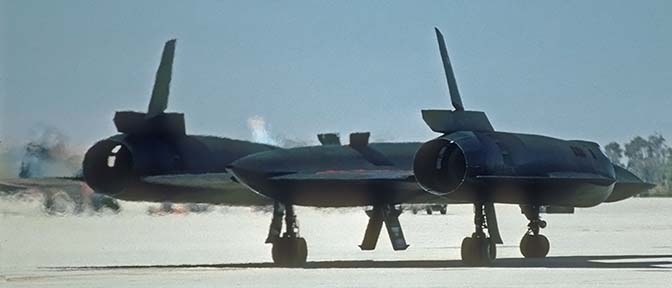

Posted on 01/18/2021 7:46:09 AM PST by Onthebrink
During the 1950s Sweden may have maintained a policy of neutrality, yet it still sought to develop a rather well-stocked arsenal of domestically-produced military hardware.
From 1952-57 the Scandinavian nation even conducted a feasibility study to develop a delta-wing supersonic bomber that would have a nuclear strike capability.
(Excerpt) Read more at 19fortyfive.com ...


The Swedes sure made some bad ass looking aircraft.
The artist concept in the article is no exception.
The model pictured...meh.
The modern Gripen is also a very good airplane (it punches far above its weight, especially the E version with an AESA radar), but it’s looks are far more conventional (like the smaller cousin of the Rafale or Eurofighter ...not the same look, but much closer to its European peers than the Viggen and Draken used to have).
The Swedes also have some very interesting stealth corvettes shepherding their waters, and talking about real stealth have some interest diesel-electric submarines that really punch above their weight.
I didn’t know about the A-36, but it is definitely a gem from the old-school Swede design.
Beautiful!
Those two keys = those two airframes
That design isn't practical, especially for a combat aircraft.
Lose one engine and the aircraft will immediately go into an unrecoverable flat spin due to the asymmetrical thrust.
The F-14 Tomcat was bad enough, this Saab design would be ten times worse.
You need nuclear weapons for that to work.
Those pictures remind me of when I used to build models of jet planes.
I might try doing it again someday.
Not as cool as a British Vulcan bomber.
Visually pleasing, but no so good after it disintegrated making a pass over an airshow.
Looks like there were several crashes but they kept flying them until 1984.
I was stationed in England from 1973-1976 and saw one do a flyover with the bomb bay doors open at an airshow and that was really cool, but now I don’t see why.
During that period I went to a bombing range as a guest and a Vulcan flew over and dropped some practice bombs. The controller said he had some guests and asked it he would do a slow flyover with the bomb bay doors open, but, alas, the Vulcan said he was low on fuel and couldn’t do it.
It does have this thing called a rudder.
Yup, that's the problem. It has "a" rudder. As in just one rudder. And not a very large surface area, judging by the orange painted area. (The rudder is the part that moves. The stationary part is the vertical stabilizer.)
The SR-71, which has the same issue with a very large off-axis thrust line, had twin vertical stabilizers that were fully articulated in order to provide enough rudder authority to counter the offset thrust from a single engine.

How about Hoovers?
The Viking's engines are not as powerful as a fighter's, so the offset thrust isn't as great.
And if you were indeed a former CH-46 flyer, then you may have seen them up close. Ever notice how tall the S-3's tail is? (So tall that it folds.) That's for a reason.

And the vertical stabilizer is fully at the rear of the aircraft for a longer control moment. Notice that the A-36 artist's rendering has the single vertical stabilizer about a quarter of the way from the tail, closer to the CG.


Thanks for all of your posts, I understand what you are saying. Most recent fighter aircraft have twin vertical stabilizers/rudders. The Tornado has a single one which is pretty big and it’s engines are relatively close together.
I concur, the Saab would be a handful at low speed in an asymmetrical situation.
May God bless.
It is a good reminder of a simpler time when I could cut grass for about $2 a yard, buy a model ship or plane, paint and glue and have hours of fun.
Disclaimer: Opinions posted on Free Republic are those of the individual posters and do not necessarily represent the opinion of Free Republic or its management. All materials posted herein are protected by copyright law and the exemption for fair use of copyrighted works.